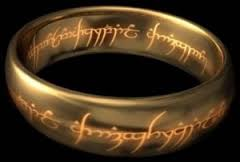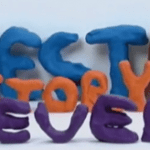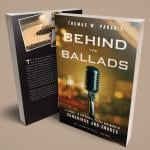Everyone has an unforgettable teacher or two in his or her history; I aspire to be that teacher for a person or two in every class I teach. When thinking about those teachers in my own history, I usually go no farther back than my mentors in graduate school, about whom I have written occasionally on this blog.
But as I stood in line for a movie ticket for 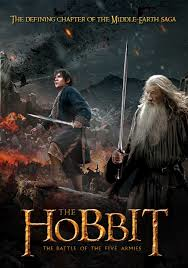 “The Hobbit: The Battle of the Five Armies” a few weeks ago, I remembered Mrs. Lord, the wonderfully monikered teacher of my college-prep English class as a freshman in high school. We spent a lot of time with grammar (something that I think fell by the wayside in high school English classes long ago), but I remember the literature. Great Expectations, A Separate Peace, Portrait of the Artist as a Young Man, Edgar Allen Poe short stories, “Romeo and Juliet,” just to name a few. I was well read for a ninth-grader, but had heard of neither the title nor the author of the book from that year that had the greatest influence on me. The Hobbit? I thought? What the hell is a hobbit? And why does
“The Hobbit: The Battle of the Five Armies” a few weeks ago, I remembered Mrs. Lord, the wonderfully monikered teacher of my college-prep English class as a freshman in high school. We spent a lot of time with grammar (something that I think fell by the wayside in high school English classes long ago), but I remember the literature. Great Expectations, A Separate Peace, Portrait of the Artist as a Young Man, Edgar Allen Poe short stories, “Romeo and Juliet,” just to name a few. I was well read for a ninth-grader, but had heard of neither the title nor the author of the book from that year that had the greatest influence on me. The Hobbit? I thought? What the hell is a hobbit? And why does  J. R. R. Tolkien find it necessary to have three initials rather than one first name? I don’t exactly remember the details of my original reaction to this book, but it was strong enough that after finishing it in two days, I went to Mrs. Lord after class and said “I really like this book. Has this guy written anything else?” “As a matter of fact, yes he has,” she replied. And I was hooked for good.
J. R. R. Tolkien find it necessary to have three initials rather than one first name? I don’t exactly remember the details of my original reaction to this book, but it was strong enough that after finishing it in two days, I went to Mrs. Lord after class and said “I really like this book. Has this guy written anything else?” “As a matter of fact, yes he has,” she replied. And I was hooked for good.
This was decades pre-Amazon, and there were not a whole lot of bookstores in northeastern Vermont, so I don’t exactly recall how I got my hands on paperback copies of the three-volume The Lord of the Rings. But I did (probably my mother pulled it off—it’s the sort of thing she did behind the scenes all the time), and I feel headlong into Middle Earth. In many ways I have never fully returned.  Starting that year (1970), for the next three decades I read the trilogy through from cover to cover on the average of every three years. When I heard over a decade ago that a Peter Jackson was planning a trilogy film treatment of The Lord of the Rings, I was fully prepared to be a critic with the same intensity that the fundamentalists of my youth were critical of Biblical epics (“That’s not scriptural!” “That’s not in the Bible!”). But I loved the trilogy on the big screen (more than I enjoyed the unnecessary trilogy of The Hobbit), and plan to watch the fifteen-hour extended version of the trilogy I have at home straight through at least once before I die (when Jeanne’s out of town—she’s not into this hobbit/elf/dwarf/wizard/orc/ent/ringwraith stuff).
Starting that year (1970), for the next three decades I read the trilogy through from cover to cover on the average of every three years. When I heard over a decade ago that a Peter Jackson was planning a trilogy film treatment of The Lord of the Rings, I was fully prepared to be a critic with the same intensity that the fundamentalists of my youth were critical of Biblical epics (“That’s not scriptural!” “That’s not in the Bible!”). But I loved the trilogy on the big screen (more than I enjoyed the unnecessary trilogy of The Hobbit), and plan to watch the fifteen-hour extended version of the trilogy I have at home straight through at least once before I die (when Jeanne’s out of town—she’s not into this hobbit/elf/dwarf/wizard/orc/ent/ringwraith stuff).
There has always been a great deal of speculation about where Tolkien got his ideas and inspiration from, beginning with the Ring of Power itself, the possession or destruction of which is the driving energy of the thousand plus pages of the epic.
One Ring to find them
One Ring to bring them all
and in the Darkness bind them
I can’t say for sure (although I’m sure that dozens of websites would be happy to school me on this), but I know where I hope Tolkien got the idea for the Ring of Power from. As a classically trained scholar, Tolkien knew his Plato—and so he also knew that at the beginning of Book Two of his masterpiece The Republic, Plato tucked a memorable story of another insignificant nobody who found a ring with remarkable powers and corrosive effects—the Ring of Gyges.
 The topic of conversation in The Republic is justice broadly conceived—something more like what we would call “morality” or “right living” rather than the narrower sense of justice as equality or fairness that we contemporary folks are familiar with. The overarching question in the early pages of The Republic is “Why be moral at all?” Socrates intends to argue that being moral is natural to human beings, but before he can get started one of his conversants, Plato’s older brother Glaucon, begs to differ. Normal people, Glaucon claims, believe that human beings are not moral by nature—we are self-interested, aggressive and competitive creatures who want what we want when we want it and are willing to pursue it at any expense, including the welfare of someone else, as long as we think we can get away with it. We impose morality and law on ourselves and each other because we are afraid of each other, but being moral is an artificial state for a human being, something contrary to our basic nature.
The topic of conversation in The Republic is justice broadly conceived—something more like what we would call “morality” or “right living” rather than the narrower sense of justice as equality or fairness that we contemporary folks are familiar with. The overarching question in the early pages of The Republic is “Why be moral at all?” Socrates intends to argue that being moral is natural to human beings, but before he can get started one of his conversants, Plato’s older brother Glaucon, begs to differ. Normal people, Glaucon claims, believe that human beings are not moral by nature—we are self-interested, aggressive and competitive creatures who want what we want when we want it and are willing to pursue it at any expense, including the welfare of someone else, as long as we think we can get away with it. We impose morality and law on ourselves and each other because we are afraid of each other, but being moral is an artificial state for a human being, something contrary to our basic nature.
To illustrate his point, Glaucon tells the story of a lowly shepherd in the kingdom of Lydia named Gyges. One day while he is bored out of his mind tending the sheep and goats, 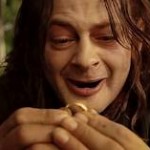 Gyges does a bit of exploring and finds a pretty gold ring. He has never owned anything so sparkly and shiny, so he keeps it. A few days later, as he is sitting in the middle of the weekly shepherds committee meeting with several of his colleagues, he is fiddling with his new toy and discovers that when he turns it a certain way on his finger, he turns invisible! Gyges uses his ring of invisibility as an instrument of empowerment—in short order his seduces the queen, kills the king, and becomes the ruler of Lydia. Furthermore, Glaucon argues, any person, from moral giants to lowly degenerates, would do the same thing with the ring of invisibility that Gyges did—whatever they wanted to do. And they would be fools if they did not.
Gyges does a bit of exploring and finds a pretty gold ring. He has never owned anything so sparkly and shiny, so he keeps it. A few days later, as he is sitting in the middle of the weekly shepherds committee meeting with several of his colleagues, he is fiddling with his new toy and discovers that when he turns it a certain way on his finger, he turns invisible! Gyges uses his ring of invisibility as an instrument of empowerment—in short order his seduces the queen, kills the king, and becomes the ruler of Lydia. Furthermore, Glaucon argues, any person, from moral giants to lowly degenerates, would do the same thing with the ring of invisibility that Gyges did—whatever they wanted to do. And they would be fools if they did not.
The purpose of Glaucon’s story is to emphasize his point that being moral is artificial, not natural. We restrict our pursuit of self-interest because we fear what will happen if we are discovered breaking the rules of society, rules intended to keep aggressive and self-centered creatures from killing each other. We bind ourselves with the restrictions of the social contract while secretly wishing for a world in which we could do whatever we desire. 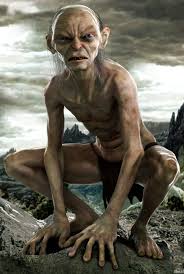 The ring of invisibility opens for its wearer that very world, a world of power and opportunity—a world in which everything can be accomplished without fear of retribution or responsibility. That Tolkien’s Ring of Power turns its wearer invisible, just as Gyges’ ring does, is a telling connection to Plato’s ancient tale. But Tolkien introduces a new element—empowerment comes at a cost. Every character sucked into the vortex of the ring’s influence—wizard, elf, dwarf, hobbit or human—experiences the corrosive effect of power without responsibility. Sméagol the lowly hobbit devolves into the tortured Gollum;
The ring of invisibility opens for its wearer that very world, a world of power and opportunity—a world in which everything can be accomplished without fear of retribution or responsibility. That Tolkien’s Ring of Power turns its wearer invisible, just as Gyges’ ring does, is a telling connection to Plato’s ancient tale. But Tolkien introduces a new element—empowerment comes at a cost. Every character sucked into the vortex of the ring’s influence—wizard, elf, dwarf, hobbit or human—experiences the corrosive effect of power without responsibility. Sméagol the lowly hobbit devolves into the tortured Gollum; 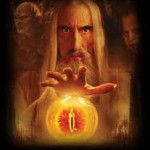 Saruman the White turns from a powerful force for good into an even more powerful force of destruction; kings become bodiless wraiths; once used, unlimited power is both seductive and deadly.
Saruman the White turns from a powerful force for good into an even more powerful force of destruction; kings become bodiless wraiths; once used, unlimited power is both seductive and deadly.
On the surface, the cosmic conflict that dominates The Lord of the Rings seems reducible simplistically to Good vs. Evil, a simplistic reading that makes Tolkien’s fantasy an endless source of ideas for violent video games. But lying just below the surface are the timeless questions that should obsess all of us. What are we? What is morality? Are good and evil mutually exclusive? How should we live our lives in the middle of a reality largely outside our control? Next Friday, I’ll return to the ring of power tales with the story of how I learned something twenty-five years ago from my seven-year-old son that I’ll never forget, something that forever influenced how I think about what is good and what is not.


